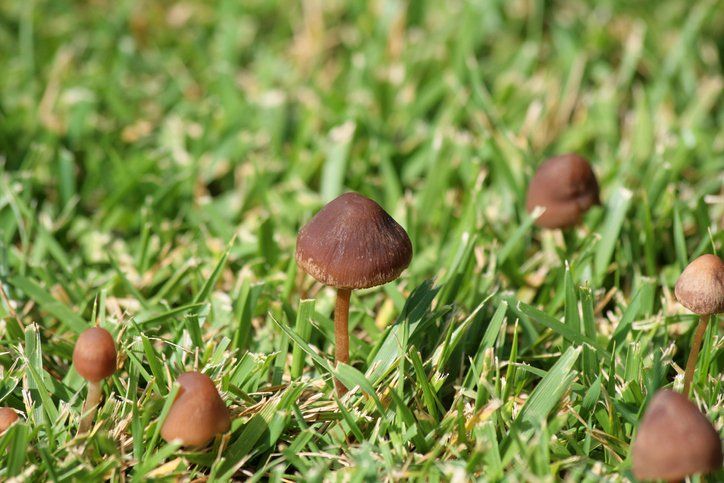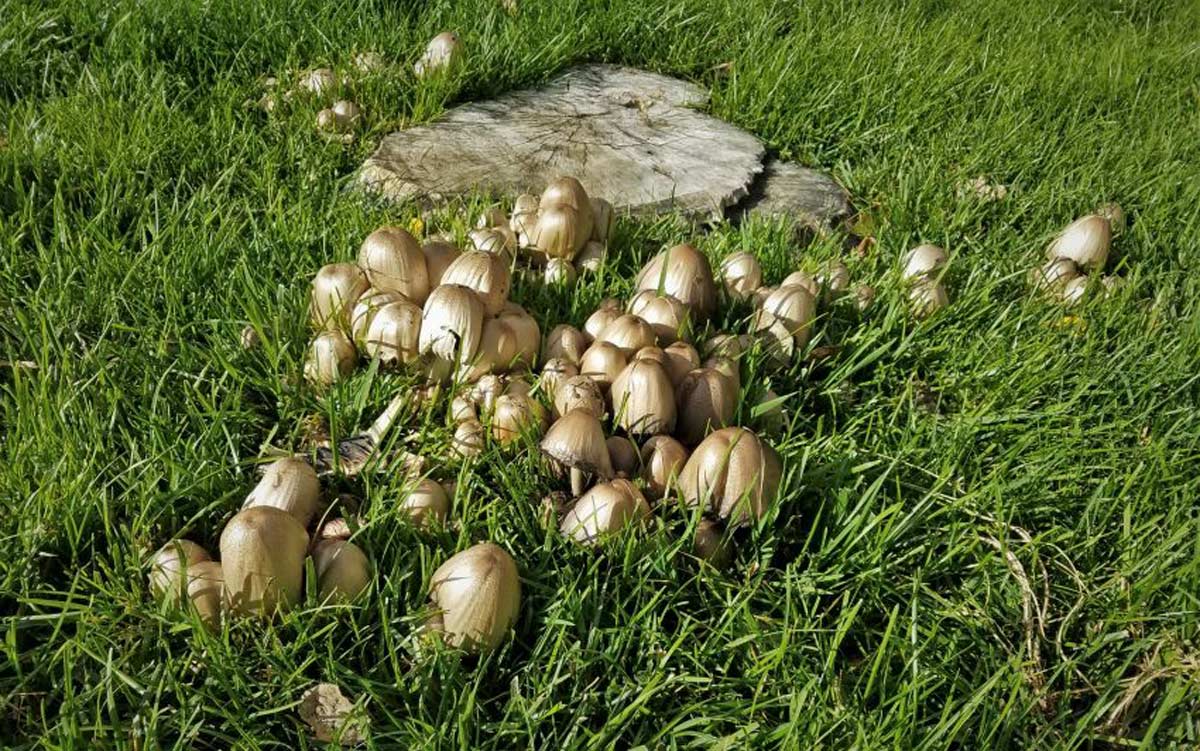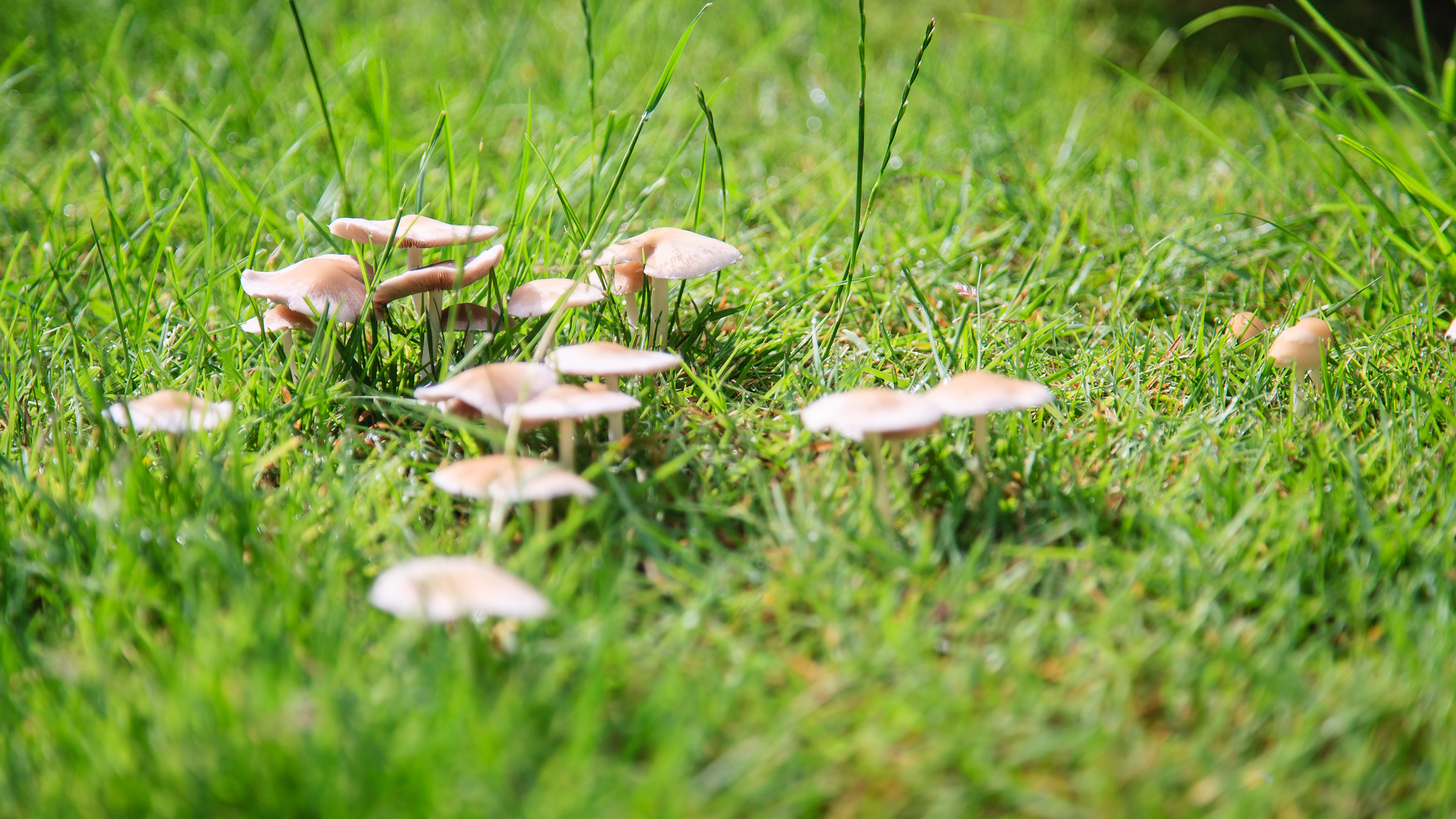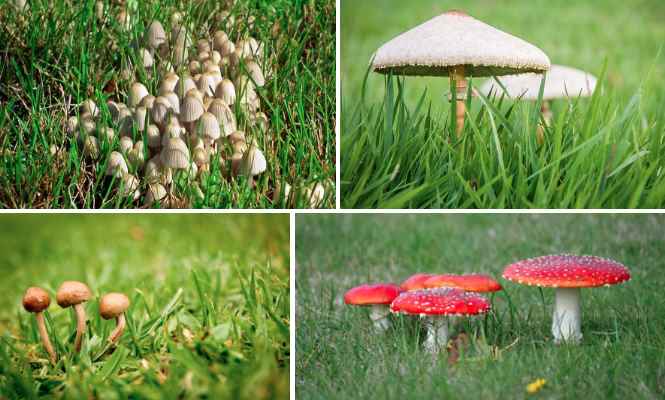What’s Behind the Brown Mushrooms in Your Lawn
Brown mushrooms growing in lawns can be a frustrating and unsightly problem for homeowners. But what causes these unwanted fungal growths to appear in the first place? The answer lies in a combination of factors, including excessive moisture, poor drainage, and decaying organic matter. When lawns are subjected to prolonged periods of rain or irrigation, the soil can become waterlogged, creating an ideal environment for mushroom spores to germinate and grow.
In addition to moisture, poor drainage can also contribute to the growth of brown mushrooms in lawns. When water is unable to drain properly, it can accumulate in the soil, creating a perfect breeding ground for fungi. Decaying organic matter, such as dead leaves or branches, can also provide a food source for mushrooms, allowing them to grow and thrive.
There are several types of mushrooms that can grow in lawns, including the common button mushroom, the portobello mushroom, and the oyster mushroom. While some species of mushrooms are harmless, others can be toxic to pets and humans, making it essential to identify the type of mushroom growing in your lawn. The impact of mushroom growth on grass health can also be significant, as the fungi can compete with the grass for water and nutrients, leading to thinning or discoloration of the lawn.
Some common species of brown mushrooms that can grow in lawns include the Panaeolus foenisecii, the Psilocybe cubensis, and the Agaricus bisporus. These mushrooms can range in size and shape, but are often characterized by their brown or tan caps and stems. Understanding the type of mushroom growing in your lawn is crucial to determining the best course of action for removal and prevention.
How to Identify the Type of Mushroom Growing in Your Lawn
Identifying the type of brown mushroom growing in your lawn is crucial to determining the best course of action for removal and prevention. There are several characteristics to look for when trying to identify a mushroom, including cap shape, size, and color. The cap shape can range from a simple button shape to a more complex shape with a distinctive rim or edge.
The size of the mushroom can also be an important identifying feature, with some species growing to be quite large while others remain relatively small. The color of the cap can also vary, with some species having a distinctive brown or tan color while others may have a more vibrant color such as red or yellow.
In addition to these physical characteristics, it’s also important to consider the habitat and environment in which the mushroom is growing. Different species of mushrooms tend to thrive in different environments, so taking note of the surrounding conditions can help narrow down the identification.
Some common species of brown mushrooms that can grow in lawns include the Panaeolus foenisecii, the Psilocybe cubensis, and the Agaricus bisporus. These mushrooms can be identified by their distinctive cap shapes and sizes, as well as their habitats and environments.
Proper identification of the type of mushroom growing in your lawn is essential to determining the best course of action for removal and prevention. If you’re unsure of the type of mushroom, it’s always best to consult with a professional or seek guidance from a trusted field guide.
The Risks Associated with Brown Mushrooms in Your Lawn
Brown mushrooms growing in lawns can pose several risks to pets, humans, and the environment. One of the most significant risks is the potential for toxicity. Some species of brown mushrooms, such as the Psilocybe cubensis, contain psychoactive compounds that can be toxic to humans and animals if ingested.
In addition to toxicity, brown mushrooms can also spread their spores and create more growth, leading to a larger infestation. This can be particularly problematic in lawns with poor drainage or excessive moisture, as the spores can easily spread and germinate in these conditions.
Furthermore, brown mushrooms can also compete with grass and other plants for water and nutrients, leading to thinning or discoloration of the lawn. This can be especially problematic in lawns with poor soil quality or inadequate fertilization.
Another risk associated with brown mushrooms is the potential for allergic reactions. Some people may be allergic to the spores or other components of the mushrooms, which can cause respiratory problems or skin irritation.
It’s essential to take steps to prevent the growth of brown mushrooms in your lawn and to address any existing infestations promptly. By understanding the risks associated with brown mushrooms, you can take proactive measures to protect your lawn, pets, and family.
How to Remove Brown Mushrooms from Your Lawn
Removing brown mushrooms from your lawn can be a straightforward process if done safely and effectively. The first step is to wear protective gear, including gloves and a face mask, to prevent exposure to potential toxins or allergens.
Next, carefully dig around the mushroom, making sure to remove the entire root system to prevent regrowth. Use a shovel or trowel to gently loosen the soil around the mushroom, taking care not to damage the surrounding grass or plants.
Once the mushroom has been removed, dispose of it properly by sealing it in a plastic bag and throwing it away. Do not compost the mushroom, as this can spread the spores and create more growth.
After removing the mushroom, it’s essential to address the underlying conditions that led to its growth. Check the lawn for areas of poor drainage or excessive moisture, and take steps to improve the soil quality and drainage.
This may involve aerating the lawn, adding organic matter such as compost or manure, or installing a French drain to improve water flow. By addressing the underlying conditions, you can help prevent future mushroom growth and maintain a healthy, thriving lawn.
It’s also important to note that some brown mushrooms can be toxic, so it’s essential to exercise caution when handling them. If you’re unsure about the type of mushroom or how to remove it safely, consider consulting with a professional or seeking guidance from a trusted field guide.
Preventing Future Mushroom Growth in Your Lawn
Preventing future mushroom growth in your lawn requires a combination of good lawn care practices and addressing the underlying conditions that led to the growth. One of the most effective ways to prevent mushroom growth is to improve drainage in your lawn.
This can be achieved by aerating the lawn, adding organic matter such as compost or manure, or installing a French drain to improve water flow. Additionally, reducing moisture in the lawn can also help to prevent mushroom growth.
This can be done by adjusting your watering schedule, using a rain gauge to measure rainfall, and avoiding overwatering. Maintaining good lawn care practices, such as regular mowing, fertilizing, and pest control, can also help to prevent mushroom growth.
Regular mowing can help to promote healthy grass growth, while fertilizing can provide essential nutrients for the grass. Pest control can help to prevent pests that can damage the grass and create an environment conducive to mushroom growth.
It’s also important to note that some mushrooms can grow in lawns with poor soil quality. Adding organic matter such as compost or manure can help to improve soil quality and reduce the likelihood of mushroom growth.
By following these tips and maintaining good lawn care practices, you can help to prevent future mushroom growth in your lawn and keep your lawn healthy and thriving.
The Role of Fertilizers and Pesticides in Mushroom Control
Fertilizers and pesticides can play a role in controlling brown mushroom growth in lawns, but it’s essential to use these products safely and effectively. Fertilizers can help promote healthy grass growth, which can make it more difficult for mushrooms to grow.
However, over-fertilization can actually contribute to mushroom growth by creating an environment with excessive nutrients. Pesticides, on the other hand, can be used to control mushroom growth, but they should be used with caution and only as a last resort.
Some pesticides, such as fungicides, can be effective in controlling mushroom growth, but they can also harm beneficial organisms in the soil. It’s essential to choose a pesticide that is specifically designed to control mushrooms and to follow the instructions carefully.
In addition to using fertilizers and pesticides, it’s also important to maintain good lawn care practices, such as regular mowing, watering, and aerating. These practices can help promote healthy grass growth and reduce the likelihood of mushroom growth.
It’s also worth noting that some mushrooms can be resistant to pesticides, so it’s essential to use a combination of methods to control their growth. This can include removing the mushrooms by hand, improving drainage, and reducing moisture in the lawn.
By using fertilizers and pesticides safely and effectively, and combining them with good lawn care practices, you can help control brown mushroom growth in your lawn and maintain a healthy, thriving lawn.
When to Call a Professional for Mushroom Removal
While it’s possible to remove brown mushrooms from your lawn on your own, there are situations in which it may be necessary to call a professional for assistance. If you have a large-scale infestation of mushrooms, it may be difficult to remove them all on your own, and a professional can provide the necessary equipment and expertise to get the job done.
Additionally, if you suspect that you have a toxic mushroom species growing in your lawn, it’s essential to call a professional for removal. Toxic mushrooms can be hazardous to pets and humans, and a professional will have the necessary training and equipment to safely remove them.
When searching for a professional to remove mushrooms from your lawn, look for someone with experience in lawn care and mushroom removal. Check online reviews and ask for references to ensure that you’re hiring a qualified professional.
It’s also essential to ask about the methods and products that the professional will use to remove the mushrooms. Make sure that they use safe and effective methods that won’t harm your lawn or the environment.
By hiring a professional to remove brown mushrooms from your lawn, you can ensure that the job is done safely and effectively, and that your lawn is protected from future infestations.
Maintaining a Healthy Lawn to Prevent Mushroom Growth
Maintaining a healthy lawn is crucial to preventing brown mushroom growth. Regular mowing, watering, and fertilizing can help promote healthy grass growth and reduce the likelihood of mushroom growth.
Regular mowing can help to promote healthy grass growth by removing dead and dying grass blades, which can help to prevent the growth of mushrooms. Watering your lawn deeply but infrequently can also help to promote healthy grass growth and reduce the likelihood of mushroom growth.
Fertilizing your lawn regularly can also help to promote healthy grass growth and reduce the likelihood of mushroom growth. Use a balanced fertilizer that contains nitrogen, phosphorus, and potassium to promote healthy grass growth.
In addition to regular mowing, watering, and fertilizing, it’s also important to maintain good lawn care practices to prevent mushroom growth. This includes aerating your lawn regularly, dethatching your lawn, and controlling weeds.
By maintaining a healthy lawn and following these tips, you can help to prevent brown mushroom growth and keep your lawn healthy and thriving.
Remember, prevention is key when it comes to maintaining a healthy lawn and preventing mushroom growth. By following these tips and maintaining good lawn care practices, you can help to prevent brown mushroom growth and keep your lawn healthy and thriving.







